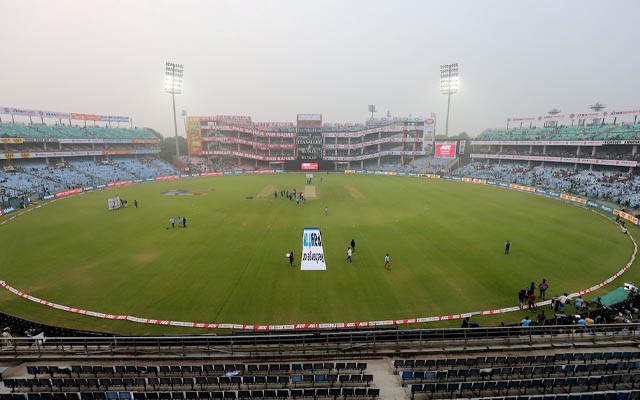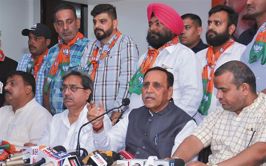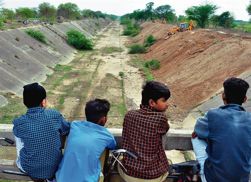
Picture for representational purpose only.
Delhi takes the cricketers’ breath away — and they cough and choke and get rashes and infections. This is the fate of the residents of Delhi, too, but their discomfort doesn’t elicit a response much more serious than annual handwriting at the highest quarters — and then the winter ends, the air gets lighter and the smog becomes bearable. Thereafter, it’s business as usual.
But when it’s sports, and international sports, pollution brings lasting disgrace to Delhi. India and Delhi endured disgrace in December 2017. During the Test match between India and Sri Lanka, most Sri Lankan cricketers played with masks on. You might remember the unfortunate quick bowler Suranga Lakmal, who was “continuously vomiting” due to the dangerously high level of pollution and had to be helped out of the field. Mohammed Shami, Indian paceman, too threw up several times on the field. Kuldeep Yadav, the 12th man for India in that game, was prudent enough to put a mask on when he came to the field with drinks for the players.
India’s officials, embarrassed by the scenes on the field of play, became defensive-aggressive — CK Khanna, acting president of the BCCI, said: “If 20,000 people in the stands did not have problems and the Indian team did not face any issue, I wonder why the Sri Lankan team made a big fuss?”
This attitude was reminiscent of an Indian official at the 2010 Delhi Commonwealth Games, Lalit Bhanot, dismissing criticism of ‘squalid’ rooms for the visiting athletes and officials. “These rooms are clean to both you and us… Foreigners want certain standards in hygiene and cleanliness which may differ from our perception,” he said to Indian journalists.
As with cleaner rooms, cleaner air is something Indians must aspire too — if they think clean rooms or clean air are western concepts, they need to have their heads examined.
Though the cleanliness of a room may be a matter of perception, cleanliness of air is measurable in numbers — and the numbers for Delhi are frightening.
On Thursday evening, the air quality index (AQI) breached the mark of 400 in several parts of the capital, reaching “severe” levels, which means that a serious hazard is faced by people breathing it in. By the evening, the AQI had touched 417. Things were to get worse on Friday — at 9 am, the AQI averaged 471 in Delhi.
Delhi’s people may well have got used to the terrible air the year round, and particularly the noxious one in winter, but the spike in horrible cough and flu cases in the national capital shows that it affects them badly. For a visitor from Sri Lanka, it’s worse — incidentally, AQI in the capital Colombo on Saturday evening was 46 — 46, for god’s sake! No wonder, Sri Lankans choke on the Delhi air — and especially the pace bowlers, who use greater lungpower than any other on a cricket field.
The fate of the match between Sri Lanka and Bangladesh, to be played on Monday, hangs in the air, so to speak. An ICC spokesperson said that the ICC and the BCCI are monitoring the air quality in Delhi, and getting “expert advice to assess the situation”.
Khaled Mahmud, the Bangladesh team director, said that some of the squad members had developed a cough. “We don’t want to get sick,” Mahmud said. He could well have been speaking for the unfortunate denizens of Delhi — they also don’t want to get sick, but sickness is an annual winter ‘gift’ to them, thrust down their throats.
It’s not that the residents of India’s other metros are breathing in manna in hyper-oxygenated form — it has been a concern in Mumbai, too, where the England captain felt that he was eating rather than breathing air, such was its solidity due to the presence of air particles in it. Rohit Sharma, the Indian captain, spoke about his worry over the health of the future generations — about the health of “your kids, my kid”.
“It is important that they get to live without any fear… We have to look after our future generations,” he said.
It seems to be a no-brainer — a climate catastrophe can destroy human life, or any semblance of a quality life. The DNA abhors extinction, and the human race, collectively, should be deeply worried.
Rohit expressed the hope that “concerned people are taking the necessary steps to avoid this kind of situation”. If the people are indeed concerned, and taking the necessary steps, too, it’s quite evident that the steps are hopelessly inadequate. A cancelled World Cup game would be more egg on the nation’s face — but it’s likely that we’d forget it, the way we’ve forgotten the horrifying images of Sri Lankans playing with masks on, or Lakmal and Shami puking on the ground.
Join Whatsapp Channel of The Tribune for latest updates.




























